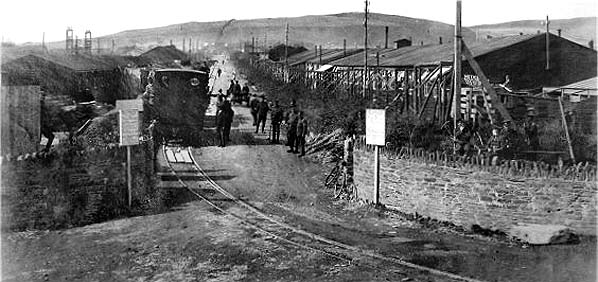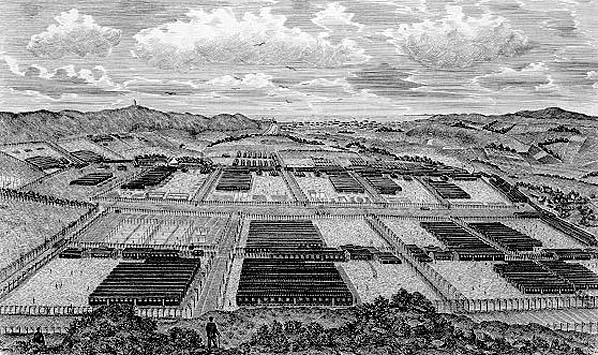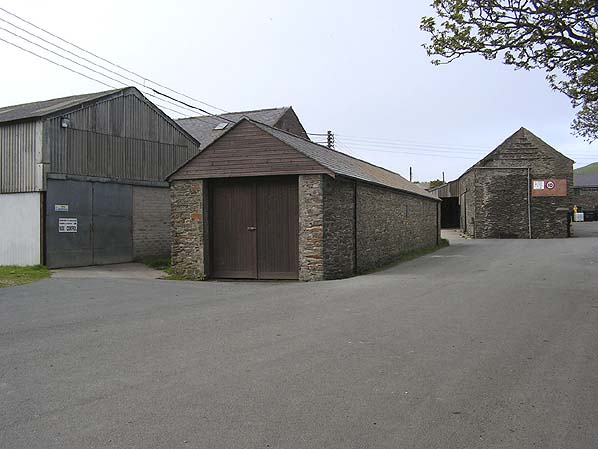|
Notes: Following the outbreak of war in 1914 holiday visitors to the island dropped dramatically. An internment camp called Knockaloe was built at Partick, a mile south of Peel to house alien civilians and prisoners of war. In order to transport prisoners, a short branch railway was built from the Peel – Douglas line to serve the camp. The branch had a steep gradient and was worked by Manx Northern Railway 0-6-0T locomotive No. 4 Caledonia. The first passenger traffic reached Knockaloe on 1st September 1915.
To accommodate the transfer of goods to the camp an extension from Peel station to the harbour was built.
During the war the line remained busy transporting internees and food. The camp was originally designed to house 5000 people, but by the end of the war it held almost 24,500 internees in a 22 acre site that was divided into 23 compounds divided between four camps each of which had its own hospital, theatre etc. Only male internees were held in the camps. The regime at Knockaloe was harsh with many internees requesting transfers to other camps. When the camp closed in late1919, many internees had served up to five years imprisonment. The last traffic on the line was in October 1920, a yhear after the camp closed. Most of the internees were deported, many unwillingly as they had British wives or had settled in Britain before the war. After closure, the site was returned to its former state as Knockaloe farm where an experimental agricultural station was established. The track was lifted in 1923/4.
A number of features remain. The paved road into the farm follows the course of the railway line. The wall lining the road is made up from floor slabs from the wooden huts that housed the internees. Several meat sheds survive, now refurbished as private housing and at the far end of the road an engine shed survives amongst the farm buildings.
It is unclear exactly where the station was located but as many island stations had no raised platforms it seems likely that the trains could stop where required along the main access road into the camp with a reception building close to the west end of the line.
Further reading: Isle of Man Classic Steam by Robert Robotham published by Colourpoint 1998. Old colour photographs of the Isle of Man Railways - ISBN 1 898392 43 9
Douglas to Peel by Tom Heavyside - Middleton Press 2002 - ISBN 978 1 901706 88 8
Isle of Man Railways Vol. 1 Pre 1873 - 1904, Vol 2 1905 - 1994 & Vol. 3 by J I C Boyd - the definitive history of the Isle of Man railways - Oakwood Press.
Island of Barbed Wire: The Remarkable Story of World War Two Internment on the Isle of Man
by Connery Chappell - published in 2005 by Robert Hale Ltd - ISBN: 0709077548
Click here for a comprehensive list of books, magazines and videos about the Isle of Man railways.
Other web sites: Narrow Gauge Heaven - includes old colour photographs
Isle of Man.com - for a more detailed history of internment on the isle of Man
Isle of Man guide - a page on Knockaloe camp
|








 Home Page
Home Page 



